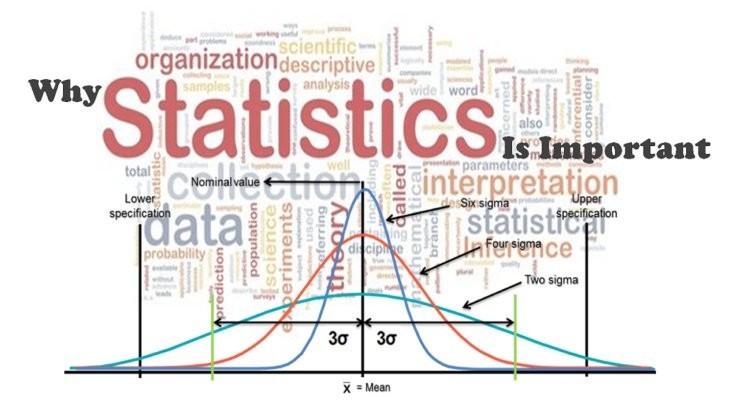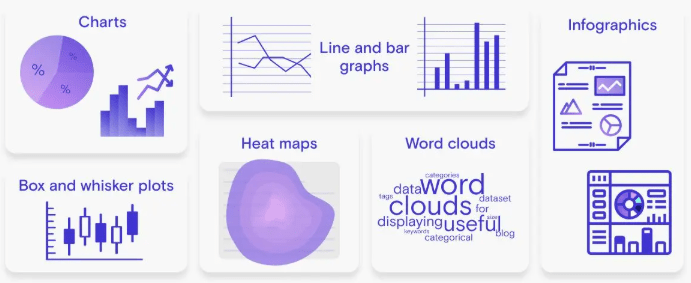
- What is Data Scientist
- What Is Expected from a Data Scientist
- 10 Technical/Non-technical Data Scientist Skills to Master
- Statistics
- Programming knownledge
- Machine Learning
- Linear Algebra and Calculus
- Data Wrangling
- Data Visualization
- Big Data
- Data Intuition
- Storytelling
- Collaborative Skills
- Conclusion
Eager to Acquire Your Data Science Certification? View The Data Science Course Offered By ACTE Right Now!
What is a data Scientist
A statistics scientist is an expert who uses a mixture of statistics, pc science, and area expertise to extract significant insights from massive and complicated datasets. They examine structured and unstructured statistics to discover patterns, trends, and relationships that may assist businesses in making knowledgeable decisions, a skill often developed through Data Science Training. Data scientists paint with gear like Python, R, SQL, and diverse device-mastering algorithms to construct predictive fashions and automate statistics-pushed processes. Beyond technical abilities, they also w, and robust verbal exchange skills to give their findings simply to non-technical stakeholders. A statistics scientist bridges the gap between uncooked statistics and actionable enterprise intelligence.
What Is Expected from a Data Scientist
As a Data Scientist, you have to have the ability to:
- Find complex Data Analytics issues.
- Showcase your Data Scientist abilities on Big Data structures and analytics gear to advantage enterprise insights.
- Evaluate the to-be-had statistics reasserts and suggest strategic procurement of recent statistics reasserts to assist a higher manner of trouble resolution.
- Support statistics collection, Data Integration, and retention necessities primarily based totally on the accumulated statistics.
- Identify/create suitable algorithms to resolve enterprise problems.
- Craft experiments to corroborate your assumptions and make to-be-had state of affairs fashions as and while necessary.
- Collaborate with enterprise stakeholders to pick out their enterprise desires and bring the anticipated results.
- Communicate statistics insights in an easy tale to empower the decision-makers to behave on.

10 Technical/Non-technical Data Scientist Skills to Master
To excel as a data scientist, one must master both technical and non-technical skills. Proficiency in programming, data cleaning, statistics, and machine learning is essential for effective analysis. Equally important are skills in data visualization and handling big data tools like Spark and Hadoop, which are often taught in Data science Training programs. Understanding business context and communicating insights clearly ensure data-driven decisions. Strong collaboration with cross-functional teams completes the skillset for impactful results.
Statistics
For a statistics-pushed organization, your stakeholders rely upon your statistics scientist’s abilities to assist them with decision-making. Statistics offers the essential techniques to dig deeper into statistics and gain precious insights from them. In addition, the more records you understand, the more you may be able to research and quantify the uncertainty in a dataset. Thus, expertise in records is one of the most essential data technological know-how abilities for a statistics scientist. Therefore, one must transition right into a statistics scientist role.
Programming Knowledge
Statistics scientists’ most essential abilities are procuring, cleaning, munging, and organizing statistics. To do this, they use statistical programming languages, such as R and Python. Also, I can pick different programming languages, such as MATLAB, SQL, Java, etc.
Machine Learning
- One of your essential duties as a Data Scientist is to become aware of enterprise issues and flip them into Machine Learning tasks. When you acquire datasets, you may use your Machine Learning abilities to feed the algorithms with statistics.
- ML will process those statistics in real time through statistics-pushed fashions and green algorithms. Soon, the device will examine and expect the statistics sample and convey correct results.
- If you work in a massive statistics-driven enterprise, you need to recognize ensemble techniques, random forests, k-nearest neighbors` algorithms, and so on.
- As a Data Scientist, the statistics you examine are frequently difficult to deal with. Therefore, it’s essential to recognize how to manage mistakes in a dataset.
- Corrupted statistics can lack a few ordinary values or not have the specified format. Using statistics wrangling, you may take away corrupted statistics and kind it accordingly.
- The capacity to procedure and use statistics for analytics is one of the most essential abilities of a statistics scientist.
- Data Scientists address many puzzling statistics samples of dependent and unstructured datasets. They use their statistics Data Wrangling, programming, and different capabilities for a statistics scientist to clean, kind, and control them.
- This way, they can find the answers to forthcoming commercial enterprise challenges. Thus, as a Data Scientist, you want to interact with Big statistics and discover ways to retrieve, control, and examine them.
- You should use Hadoop or Spark to prepare, distribute, or manage statistics to interface with big statistics. Most data scientists choose Spark, which no longer has Hadoop, as it permits speedy real-time statistics processing.
- However, whichever Big Data device you use, you must study and paint on statistics exploration, filtering, sampling, summarization, etc.
- When you emerge as a data scientist, the corporation will need you to be a hassle solver and discover the satisfactory and feasible answer for a hassle statement. In this case, you want to not forget what’s essential, what doesn`t matter, and a way to interact with engineers, stakeholders, and, now and again, even end-users.
- So, how can you do all these? Call it a commercial enterprise or statistics intuition; the essential issue you want to understand is how to use your statistics scientist’s capabilities and knowledge of math, statistics, programming, Big Data Analytics, etc., to provide you with the most viable answer.
- If you’ve enrolled in a Data Science course, test if the education covers a real-international Project Management. If you no longer want to, please return to the course. The initiatives you figure out come up with the possibility of applying, implementing, and taking a look at your statistics scientist capabilities.
- Always take into account that an excellent Data Scientist isn’t someone despatched with the aid of God, who is aware of everything. He/she knows how to apply something, including an algorithm, to get satisfactory outcomes or value.
- To emerge as an achieved Data Scientist, you want to channel your Learn Data science to boost the tempo of the output and ensure your corporation’s sustainable boom.
- You can’t try this alone. You should collaborate along with your team (technical and non-technical), stakeholders, and end-users.
- Thus, when you have the specified human beings’ capabilities, you may collaborate with others to look at their ache factors and triumph over organizational challenges.
Ready to Earn Your Data Science Certificate? View The Data Science Course Offered By ACTE Right Now!
Linear Algebra and Calculus
If you equip yourself with the standards of linear algebra and calculus, you may make minute upgrades inside the set of rules to seriously affect the cease result. Though studying them isn’t necessary, some businesses that churn out a massive variety of statistics, like Netflix, Amazon, etc., usually search for Data Scientist applicants with exemplary linear algebra and calculus abilities.
Data Wrangling
Are You Considering Pursuing a Data Science Master’s Degree? Enroll For Data Science Master Course Today!
Data Visualization
Communication of statistics is essential for stakeholders to make statistics-driven decisions. This approach requires you to describe how your findings work for the cease audience, which includes technical and non-technical professionals. Thus, to do this, you want statistics visualization abilities that accommodate statistics visualization coding and statistics transmission. You can begin with statistics visualization by studying numerous statistics visualization equipment, including Matplotlib, ggplot, and Tableau, which are covered in our Data Analyst Course.

Big Data
Set to Ace Your Microsoft Azure Job Interview? Check Out Our Blog on Data Science Interview Questions & Answer
Data Intuition
Storytelling Skills
One of the most essential capabilities of statistics scientists that you want to study is enabling your business enterprise`s decision-makers with simple findings. This method requires translating the quantitative outcomes into the language they understand. Not only do you have to speak the same language that the business uses, but you may also want to apply statistics to inform the stories. You want to create a storyline based on the statistics so everybody effortlessly knows it. Thus, Storytelling will assist you in communicating your agency’s outcomes and providing value.
Collaborative skills
Conclusion
In conclusion, the evolving panorama of records technology in 2025 demands a dynamic mixture of technical expertise, analytical thinking, and gentle talents, all of which can be effectively developed through Data Science Training. Mastery of programming languages like Python and R, a sturdy command of device mastering strategies, and the capacity to deal with large records frameworks are more vital than ever. At the same time, records Storytelling, powerful communication, and area information have become essential differentiators in an aggressive subject. As synthetic intelligence and automation continue to form the future, records scientists should stay adaptable, constantly mastering and leveraging modern equipment and strategies to force innovation and impact. Investing in those key talents is essential for thriving in tomorrow`s records-pushed world.


